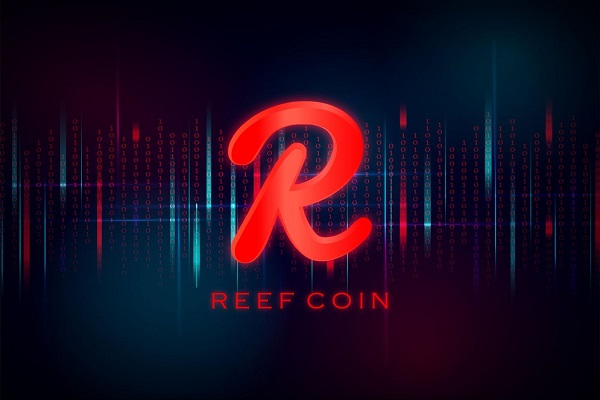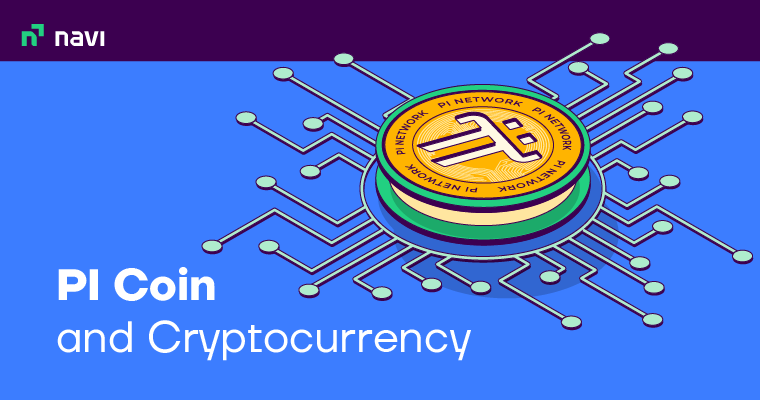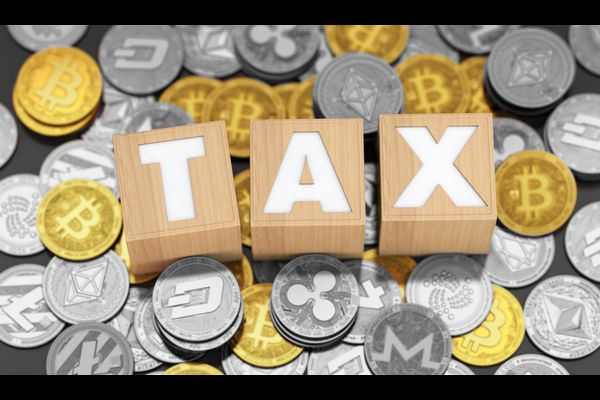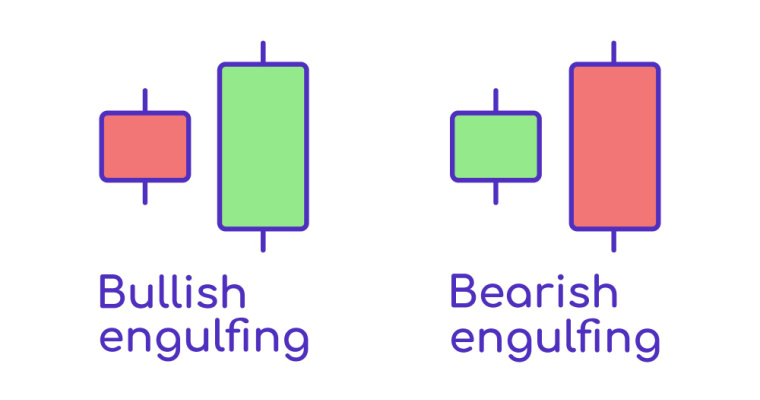Understanding REEF Crypto, Its Features, Price and How to Buy

In the world of cryptocurrencies, there has always been a push towards decentralisation. To achieve true decentralisation, new DeFi (Decentralised Finance) projects like Reef Finance (REEF) and its native cryptocurrency, REEF crypto, are further democratising finance. The REEF crypto and its parent blockchain feature smart liquidity aggregation, cross-chain trading, a yield engine and highly advanced EVM compatibility.
Interested to learn about this blockchain and its unique features? Give this detailed post to understand REEF crypto in simple words.
What Is Reef Finance (REEF)?
Reef Finance (REEF) is a blockchain-based platform built on Polkadot. Its name is an acronym made up of these words – Reliable Extensible Efficient First Layer Blockchain. According to some crypto experts, it is the world’s first cross-chain platform where people can trade all sorts of DeFi products and services.
Its uniqueness is that it allows traders to transfer tokens between different blockchains, whether they are centralised or decentralised. Moreover, this platform offers the Reef Yield Engine, which allows users to take part in smart borrowing, mining, lending, staking and other activities.
The Reef platform was launched by Denko Mancheski in 2019, who aimed to lower the entry barrier for new and inexperienced investors wanting to invest in different cryptos. Mancheski had a strong background in cryptocurrencies, being employed as the Chief Technology Officer at Adel, a crypto incubator company.
Reef entered the market in the last quarter of 2020 and soon witnessed rapid growth in terms of users, partners and developers. The launch date of REEF coin was December 30 2021. Today, this network continues to develop and enter into partnerships with other prominent DeFi projects.
What is Reef Blockchain?
Reef Chain is a Layer 1 blockchain that was developed by Reef Finance on the Polkadot platform. It was initially built only as a DeFi platform supporting cross-chain transactions, but today, it is a fully functioning blockchain. Reef blockchain is interoperable with Polkadot parachains and is, thus, a part of the Web 3.0 network.
Moreover, the Reef ecosystem is compatible with the Ethereum Virtual Machine (EVM), which makes it possible for developers to host their Ethereum-based DApps (Decentralised Apps) on this blockchain. In short, Reef Chain offers a single ecosystem that investors, traders and developers use for its simplicity.
The REEF crypto is the native cryptocurrency of Reef Chain and functions both as a governance token and a utility token. As a governance token, it allows holders to stake their coins to become validators. As a utility token, it can be used to pay fees for transactions, data storage and other activities.
Also Read: Ripple Crypto 101: A Beginner’s Guide To Ripple Cryptocurrency
How Does Reef Finance Work?
Reef platform’s main objective is to solve investor confusion by offering a one-stop shop where users can access multiple DeFi networks and save time on research. Using it, one can access DeFi platforms like Aave, Binance Smart Chain, Compound, Plasma, Moonchain, Synthetix and Uniswap.
The Reef Chain uses the NPoS (Nominated Proof of Stake) consensus mechanism, a well-known form of security validation. In a PoS system, validators are chosen to verify transactions, unlike PoW (Proof of Work) consensus systems which use miners. When a block of transaction data gets added, validation is done by a node which has the largest stake.
In an NPoS system, these nodes can either be nominators or validators. These nominators are responsible for selecting validators whose job is to authenticate transactions.
Salient Features of the Reef Ecosystem
These are some of the important features of the Reef system:
- Interoperability: A major concern of developers in the DeFi sector is their lack of interoperability. The Reef ecosystem addresses this problem by integrating every best aspect of the major blockchains.
- Transaction fees: Reef offers a low-cost fee structure compared to other blockchains. In addition, it avoids congestion pricing for its fee hiking structure due to its high scalability. Users can pay this transaction fee using the REEF crypto.
- Energy consumption: Unlike coins like Bitcoin and Ethereum, which are notorious for resulting in sky-high electricity bills, Reef’s PoS system hardly consumes much power. Thus, this coin does not have the sustainability issue of older crypto coins.
- EVM compatibility: The Reef Chain uses the same programming language (Solidity) as EVM and other networks for smart contracts. Due to its high compatibility, developers will have no trouble importing their DApps to Reef.
- Limited circulation: Like Bitcoin, there are a limited number of Reef cryptocurrencies in circulation. Its finite supply means that no new tokens can be minted once its total supply is exhausted. This minimises inflation and devaluation of this coin.
What are the Uses of the Reef Finance?
You can use the Reef network for operating DApps, liquidity mining, trading, investing, staking, getting yield rewards, etc. This platform also gives you easy access to a host of DeFi services and products from multiple blockchains. Furthermore, users can easily find the best yield rates through an automated process.
The native REEF crypto can be used to take part in the network’s governance mechanism or to pay transaction fees. Reef also allows liquidity bridges between Ethereum and BNB Chain via ERC-20 and BEP-20 tokens, respectively.
A unique use case for the REEF cryptocurrency is its ease of use of DApps using this platform. DApps provide transactional services for DeFi and use tokens for such transactions. However, such transactions may be too technical for the average person. This is where the Reef network becomes crucial as it facilitates transferring of value between centralised and decentralised exchanges.
How to Buy Reef Crypto?
Since its launch in 2020 on the Binance platform, the Reef token has been listed on a number of major cryptocurrency exchanges. You can take a look at the transaction fees, customer support, ease of use and registration with the country’s regulator to see which exchange will be the best for the purchase.
The following exchanges offer the REEF crypto for investors:
- Binance: This is one of the most popular exchanges for investors outside the USA.
- WazirX: A part of the Binance Group, it is the largest cryptocurrency exchange in India.
- KuCoin: This exchange offers over 300 cryptocurrencies and usually accepts most new coins.
To buy cryptocurrencies from one of these exchanges, you can follow these steps:
Step 1: Create an account on the exchange platform using your email address. Many platforms may also ask for identity proof and a phone number for verification.
Step 2: After successful verification, search “Reef crypto” in the search bar. After getting redirected, click on “Buy”.
Step 3: Enter the number of Reef crypto tokens that you wish to purchase. After confirmation of payment, the crypto tokens will be transferred to your custodial wallet.
Reef Coin Price Prediction
The intrinsic value of the Reef token is derived from the platform’s technical capacity, usage and popularity of the project. With the rise of the DeFi sector and the increase in investors in the Reef ecosystem, the intrinsic value of this cryptocurrency may rise as a consequence.
The price of REEF crypto is constantly changing, and it is often subject to radical market changes. This is likely due to the fact that the market value of cryptocurrency projects often does not accurately coincide with their intrinsic value and is often overbought or underbought.
Points to Remember Before Buying Reef Crypto
Before you decide to invest in any cryptocurrency, here are some of the important things you should consider:
- It is a good idea to check the cryptocurrency’s website to see if it’s up to date, free of errors and contains all the relevant information.
- The best way to understand a crypto project is to look at its white paper. This document will tell you about the use cases, scalability, growth possibilities and tokenomics of the coin.
- Make sure to assess the risk of investing and invest only what you can afford to lose.
- To gain insight into the investors’ sentiments about a cryptocurrency, you should check the posts and users’ comments on social media platforms.
- You should also evaluate the coin’s fundamental metrics like market cap, trading volume and supply metrics before investing.
Also Read: What Are Altcoins And How To Invest In Them?
Final Word
The REEF crypto is the native token of Reef Finance and can be used for paying for various services on the platform. It draws its value from the unique use cases of the platform. The Reef’s main feature is its cross-chain functionality, through which one can trade digital assets and transfer data across blockchains and use DApps. Though this cryptocurrency offers a unique value, it is a good idea for investors to do due diligence and check the particulars of this investment before putting their money in it.
You may consider investing in mutual funds. Start SIP at just Rs.500 per month with Navi mutual funds. Download the Navi App now!
FAQs on REEF Crypto
Ans: There are two types of wallets that you can use – hardware wallets and software wallets. The former is more secure as it uses an offline device, while the latter is online, free and easy to use.
Ans: Validators and nominators need to stake Reef to participate in the validation process. Nominators can earn more Reef if they pick good candidates and can get a share of the validator’s rewards. Validators get fixed rewards from the coin’s yearly inflation pool.
Ans: Unlike coins with traditional PoW consensus mechanisms, Reef relies on a governance model that has high scalability and upgradability. Its community governance system is popular among users and useful as it covers a wide variety of proposals.
Ans: ReefSwap is Reef Finance’s service for swapping Reef tokens. This decentralised exchange (DEX) uses the Uniswap V2 model, and users can access it through its web extension.
Ans: Reef bonds allow users to stake a single type of token to farm another token over a certain period. For example, the Reef-Litentry Bond allows you to lock-up Litentry (Lit) tokens to get Reef tokens.
Before you go…
- Looking for instant 🚀 personal loans 24*7 anywhere, anytime? Get personal loans up to ₹20 lakh starting at 9.9% p.a. Install the Navi app now!
- Or, maybe you’re looking to buy that house you’ve been eyeing 🏠 and you need a loan of up to ₹5 crore. Install the Navi app now and get instant in-principle approval right away! Interest rates starting at 8.60% p.a.
- How about an affordable health insurance policy 👨⚕️ starting at a monthly premium of just ₹235? Install the Navi app now and get your policy in under 2 minutes.
- Instead, want to put your savings into action and kick-start your investment journey 💸 But don’t have time to do research. Invest now with Navi Nifty 50 Index Fund, sit back, and earn from the top 50 companies.
Disclaimer: Crypto products and NFTs are unregulated and can be highly risky. There may be no regulatory recourse for any loss from such transactions.
Mutual Fund investments are subject to market risks, read all scheme-related documents carefully.
This article has been prepared on the basis of internal data, publicly available information and other sources believed to be reliable. The information contained in this article is for general purposes only and not a complete disclosure of every material fact. It should not be construed as investment advice to any party. The article does not warrant the completeness or accuracy of the information, and disclaims all liabilities, losses and damages arising out of the use of this information. Readers shall be fully liable/responsible for any decision taken on the basis of this article.
More Articles on Cryptocurrency

Customer’s Feedback
No comments found.Top 10 Cryptocurrencies to Invest In 2023 – Best Cryptocurrencies In India
Cryptocurrency is a digital currency which can be used to purchase goods and services without the u... Read More »8 Top Crypto Exchanges in India – Best Crypto Exchanges 2023
Crypto assets are attracting more and more traders to explore the possibilities of their rising mar... Read More »What is Crypto Airdrop – Its Types, Taxation, Benefits and How Does it Work?
Crypto Airdrop is among one of the key strategies that have grown extremely popular since 2017 in t... Read More »What is Pi Cryptocurrency: Network, Value, Price and Future
The Pi Coin cryptocurrency has made the mining of digital currencies accessible for crypto enthusia... Read More »What Is Tax On Crypto In India And How It Is Calculated
Cryptocurrencies are decentralised digital currencies or assets based on blockchain technology, whi... Read More »What Is Internet Computer Protocol (ICP) – Its Price, Investment Benefits And Uses
The ICP crypto is the native token of the ICP Blockchain network, which is used to reward the users... Read More »What Is A Crypto Mining Rig – Its Setup, Types and How To Build One
A Crypto mining rig is a customised personal computer. It features all the essential elements of a ... Read More »Polygon(MATIC): How Does It Work, Benefits and Price Prediction
Polygon (MATIC) is a scaling solution for Ethereum, and MATIC is the name of the token that powers ... Read More »What is GALA Crypto: Review, Benefits and How to Buy GALA Coins?
GALA is an Ethereum-based cryptocurrency that powers Gala Games, a play-to-earn gaming platform. Th... Read More »What is Bullish Engulfing Pattern – its Importance in Trading
Trading in stocks is challenging. That’s why traders use several technical analysis tools, like c... Read More »What is 1inch Crypto – How Does it Work and How to Buy it?
The 1inch protocol is a decentralised exchange (dex) aggregator. Dex is a peer-to-peer (buyers and ... Read More »What is Staking Crypto and How does It Work?
Staking crypto means pledging your cryptocurrencies to the blockchain network to confirm trans... Read More »Top 10 Chit Fund Schemes in India in 2023
Chit funds are one of the most popular return-generating saving schemes in India. It is a financial... Read More »10 Best Gold ETFs in India to Invest in April 2023
Gold ETFs or Gold Exchange Traded Funds are passively managed funds that track the price of physica... Read More »10 Best Demat Accounts in India for Beginners in 2023
Creation of Demat accounts revolutionised the way trades were conducted at the stock exchanges. It... Read More »20 Best Index Funds to Invest in India in April 2023
What is an Index Fund? An index fund is a type of mutual fund or exchange-traded fund (ETF) that... Read More »Best Arbitrage Mutual Funds to Invest in India in April 2023
Arbitrage funds are hybrid mutual fund schemes that aim to make low-risk profits by buying and sell... Read More »10 Best SIP Plans in India to Invest in April 2023
What is SIP? SIP or Systematic Investment Plan is a method of investing a fixed amount in ... Read More »10 Best Corporate Bond Funds in India to Invest in April 2023
Corporate bond funds are debt funds that invest at least 80% of the investment corpus in companies ... Read More »10 Best Bank for Savings Account in India [Highest Interest Rate 2023]
Savings account is a type of financial instrument offered by several banks. It lets you safely depo... Read More »






























